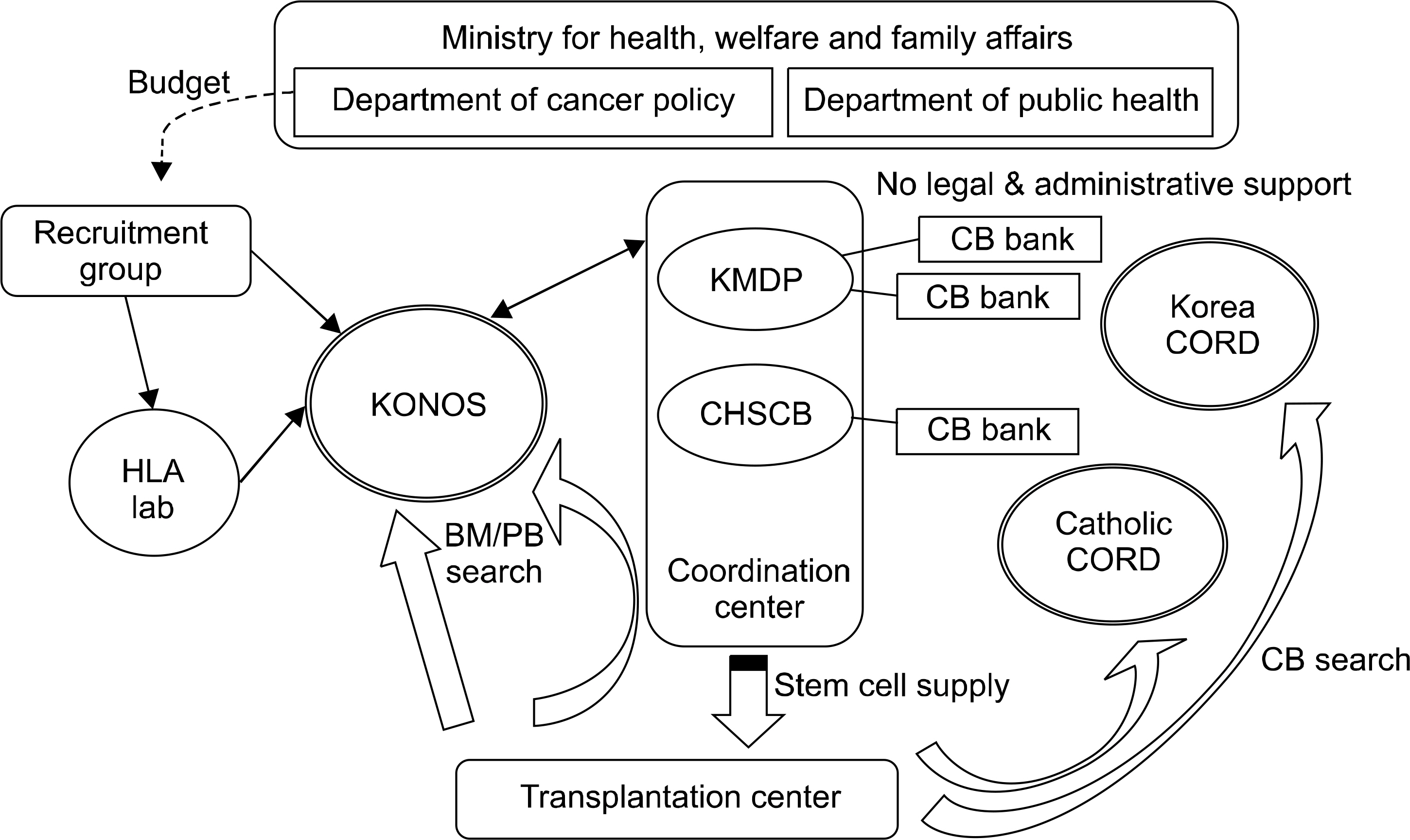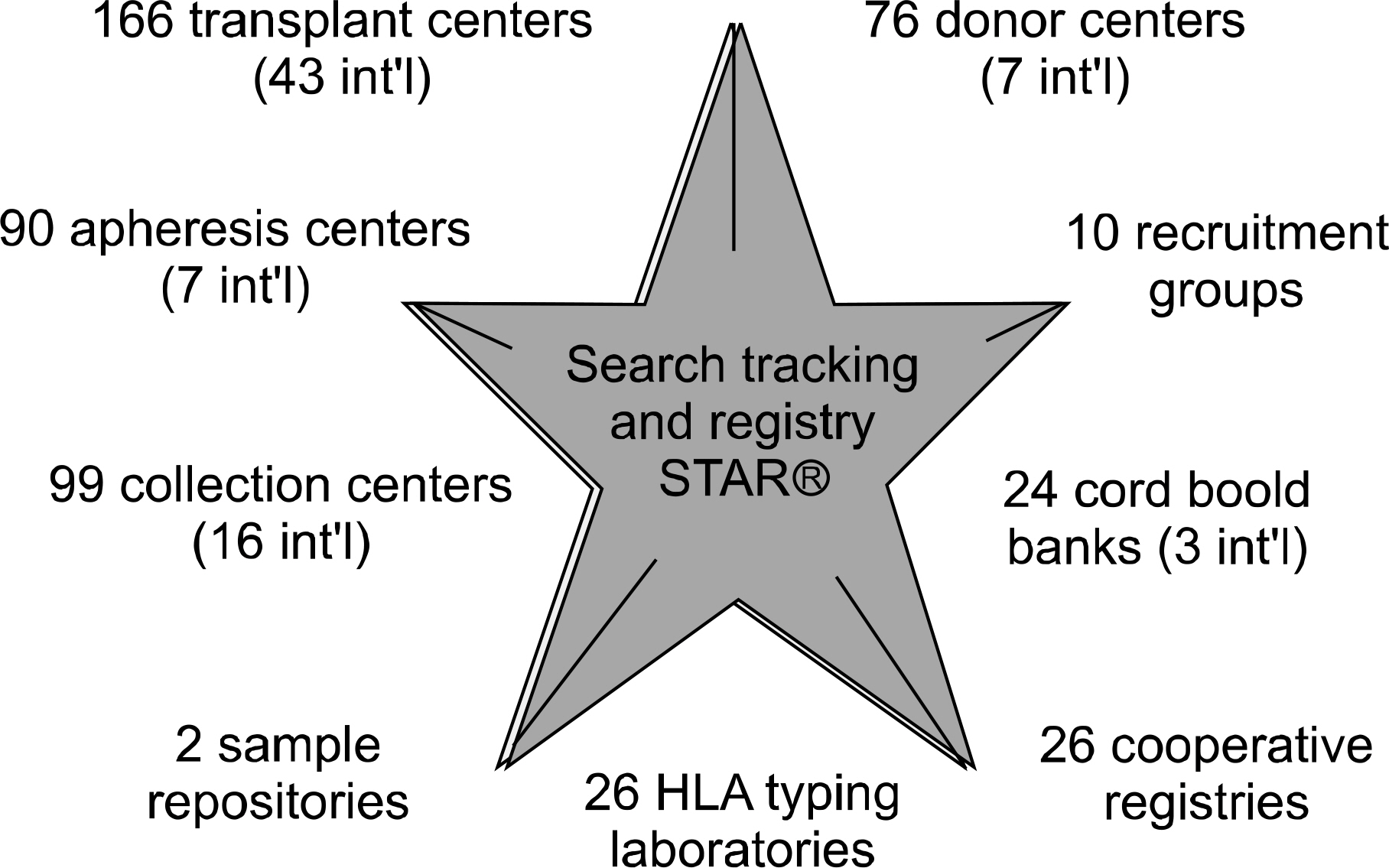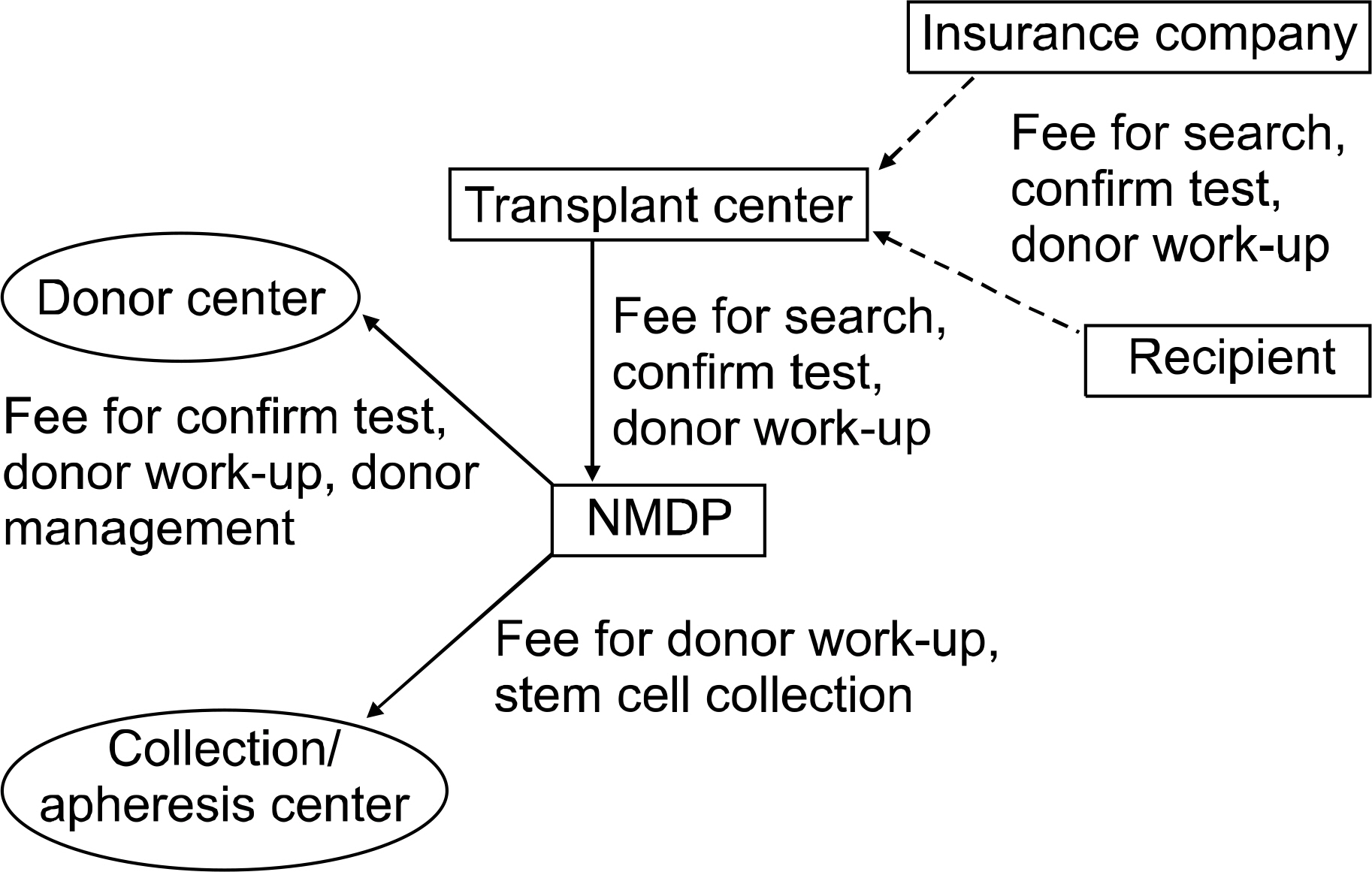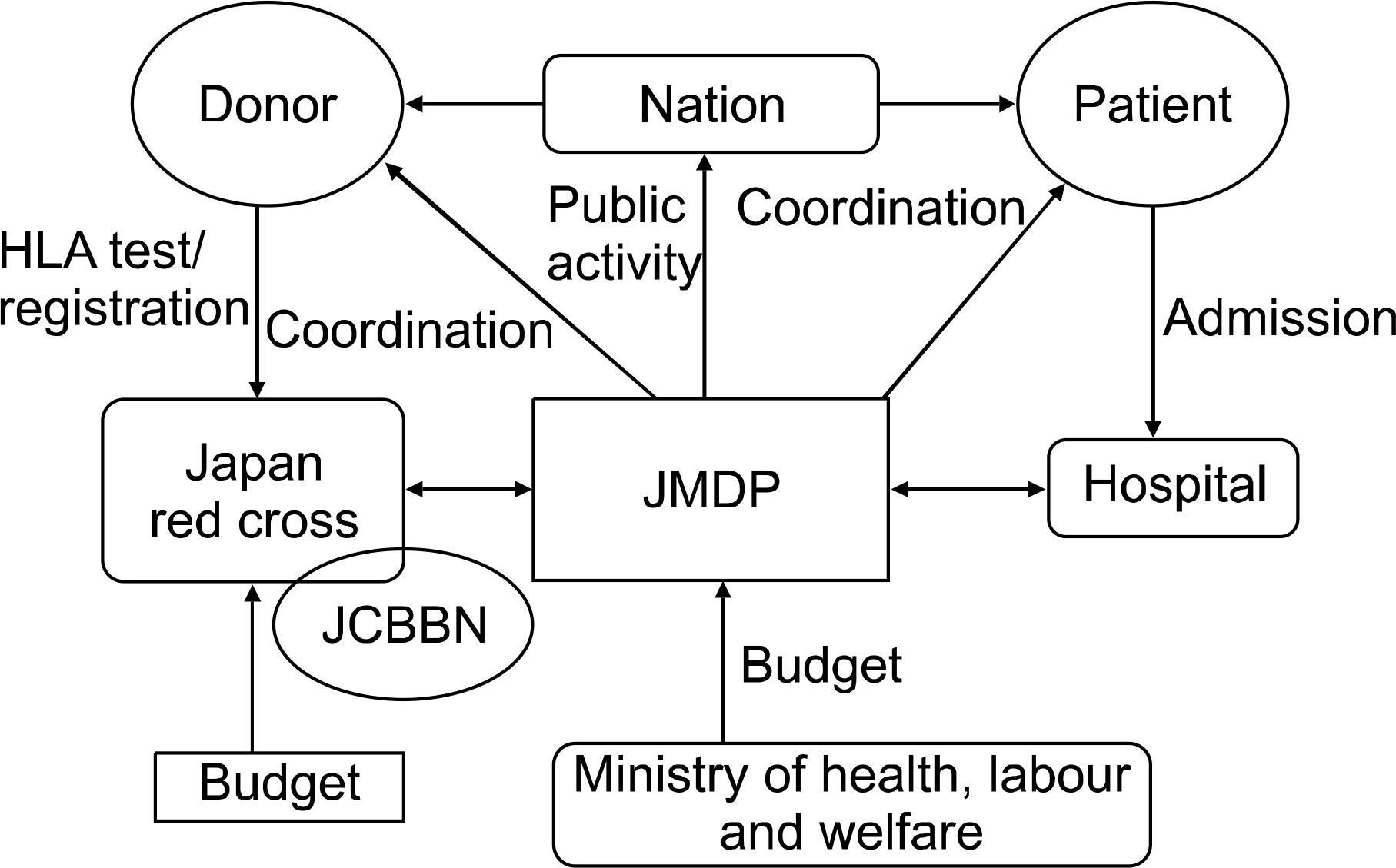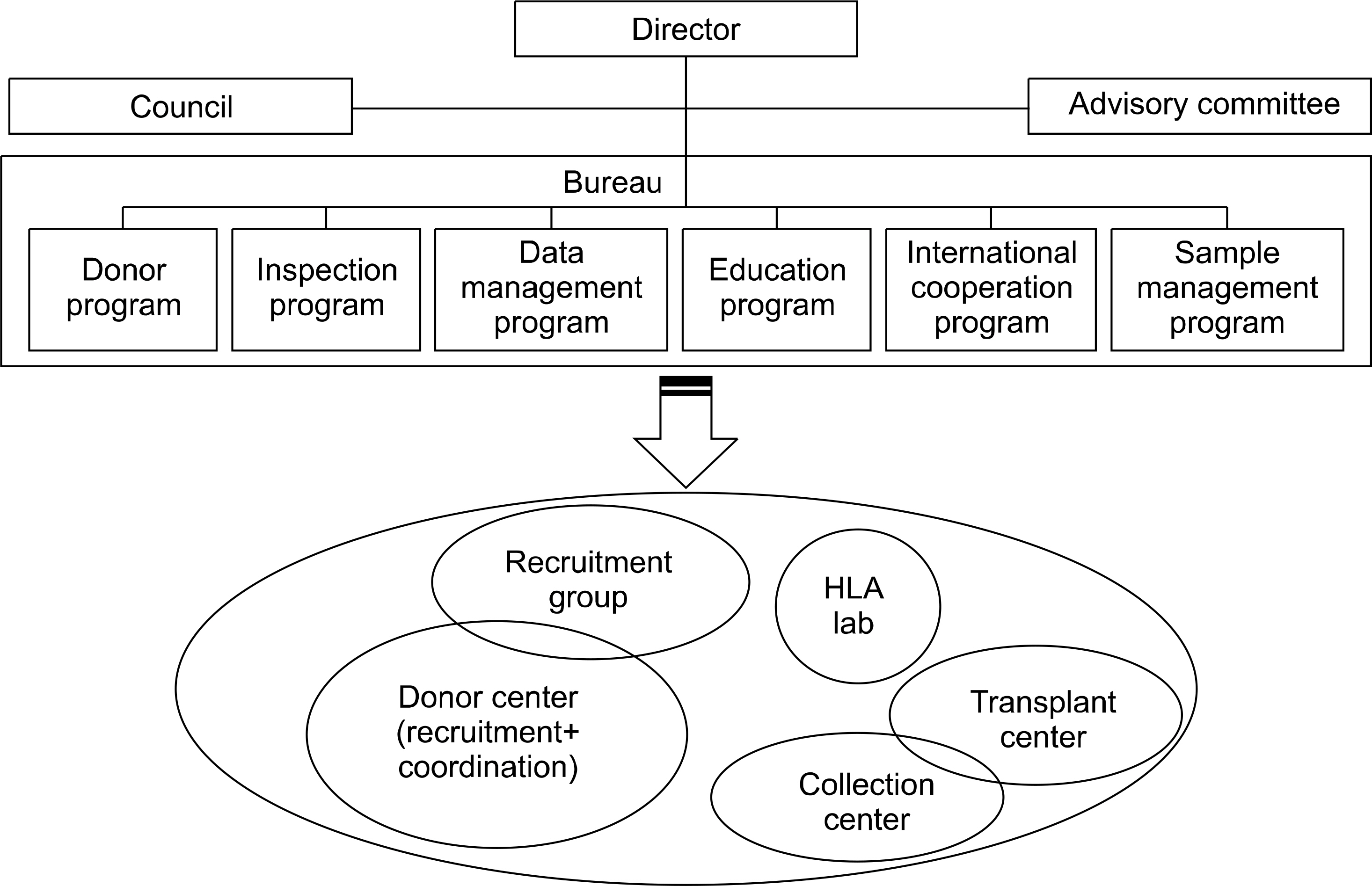Korean J Hematol.
2008 Dec;43(4):203-218. 10.5045/kjh.2008.43.4.203.
Proposal for an Ideal Management System for Hematopoietic Stem Cells in Korea
- Affiliations
-
- 1Department of Pediatrics, Hanyang University College of Medicine, Seoul, Korea. pedonco@hmc.hanyang.ac.kr
- KMID: 1485079
- DOI: http://doi.org/10.5045/kjh.2008.43.4.203
Abstract
- In Korea, the donor program for unrelated hematopoietic stem cell transplantation was started in 1994. Although the government has supported this program with a budget for donor recruitment, there is currently no organized administrative structure to coordinate the practical affairs for the hematopoietic stem cell (HSC) donor program. Therefore, we analyzed the current status of the administrative systems and practical affairs for the HSC donor programs of Korea, the USA and Japan and we propose the ideal management system for the HSC donor program in Korea.
MeSH Terms
Figure
Reference
-
1). Kim DJ., Kim CH., Park JJ. A study of bone marrow transplantation. Korean J Med. 1982. 25:109–19.2). Hwang TJ. Hematopoietic stem cell transplantation: overview for general pediatrician. Korean J Pediatr. 2007. 50:613–21.3). Kim DJ. The past, present and future of bone marrow transplantation. J Korean Med Assoc. 1995. 39:522–40.4). Cho B., Kim HK., Kim CC, et al. Successful engraftment of HLA-mismatched unrelated transplantation using banked cord blood in Korea. Korean J Hematol. 1998. 3:125–8.5). Lee YH., Cho NC., Je KH, et al. Successful cord blood stem cell transplantation for relapsed acute mixed lineage leukemia. Korean J Hematol. 1999. 34:471–6.6). Park KD., Choi HS., Park HJ, et al. Establishment of cord blood stem cell bank in Korea. Korean J Pediatr Hematol-Oncol. 1996. 6:105–14.7). Guidance for hemoatopoietic stem cell donor program. Ministry for health, welfare and family affairs. 2008.8). Kim YM., Lee SW., Lee EE., Lee YH. Current status of cord blood banks in Korea. Korean J Hematol. 2004. 39:29–35.9). U.S. department of health and human services. Health Resources and Services Administration. (Accessed November 25, 2008, at. http://www.hrsa.gov/about/default.htm. .).10). Bone marrow and cord blood donation and transplantation access to information provided through the C.W. Bill Young Cell Transplantation Program. (Accessed November 25, 2008, at. http://www.blood-cell.transplant.hrsa.gov/.).11). National Marrow Donor Program. (Accessed November 25, 2008, at. http://www.marrow.org/ABOUT/about_Us/index.html. .).12). Organization of the Ministry of Health, Labour and Welfare. (Accessed November 25, 2008, at. http://www.mhlw.go.jp/org/detail/index.html. .).13). Japan Marrow Donor Program, 2008 Aug. (Accessed November 25, 2008, at. http://www.jmdp.or.jp/docu-ments/file/09_English/About20JMDP.pdf-. .).14). Baitty RL., Ashton RS., Gale RC., Tims SE., Waberke A., Burdick JF. Update on the C.W. Bill Young Cell Transplantation Program & National Cord Blood Inventory. Biol Blood Marrow Transplant. 2007. 13:1403–4.15). Donating umbilical cord blood to a public bank/options for umbilical cord blood. (Accessed November 25, 2008, at. http://www.bloodcell.transplant.hrsa.gov/CORD/Options/index.html. .).16). Hematopoietic stem cell bank. Cha YJ, Koo HH, Kwon SW, editors. Hematology. 1st ed.The Korean Society of Hematology, Seoul: Epublic;2006. p. 446–50.17). Lee YH., Kook H., Koo HH, et al. The guideline and statute for cord blood banks in Korea. The proceedings of the 3rd annual meeting of Asian Hematology Association. 2005. 51–3.18). Korean blood and marrow transplant registry. (Accessed November 25, 2008, at. http://www.kbmtr.org/main.html. .).19). NMDP 2007 report to the community. (Accessed November 25, 2008, at. http://www.marrow.org/ABOUT/about_Us/Publications/Report_to_the_Community_PDF/00594_report2community_2007.pdf.).20). The marrow foundation 2007 annual report. (Accessed November 25, 2008, at. http://www.marrow.org/ABOUT/about_Us/Publications/Foundation_Annual_Report/11434-tmf_annual_report.pdf.).21). Atsuta Y., Suzuki R., Yoshimi A, et al. Unification of hematopoietic stem cell transplantation registries in Japan and establishment of TRUMP system. Int J Hematol. 2007. 86:269–74.22). Lee YH. Current status and polifical issues for cord blood banking program in Korea. 10-year Anniversary symposium of Cord blood transplantation in Korea. 2008. 16–9.
- Full Text Links
- Actions
-
Cited
- CITED
-
- Close
- Share
- Similar articles
-
- Hematopoietic Stem Cell Transplantation
- Opening the era of in vivo xenotransplantation model for hematopoietic stem cell transplantation
- Current Trends and Prospect of Cell Therapy using Hematopoietic Stem Cells
- Hormonal Regulation of Hematopoietic Stem Cells and Their Niche: A Focus on Estrogen
- Hematopoietic Stem Cell Transplantation in Inborn Error of Metabolism

